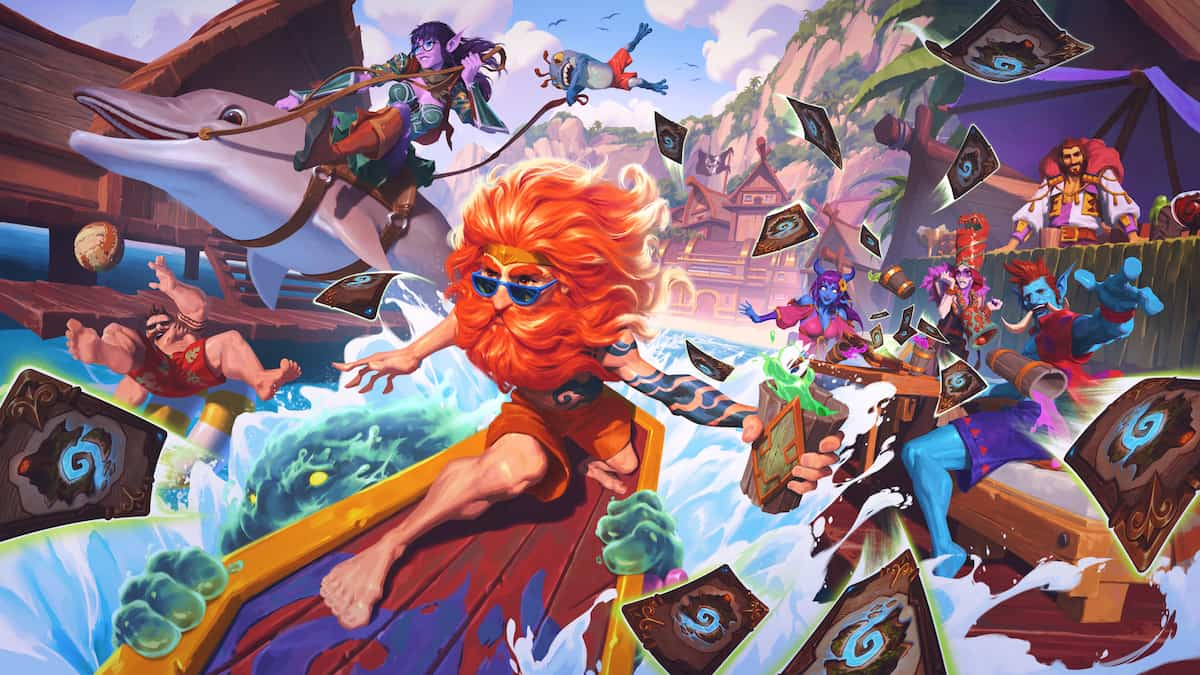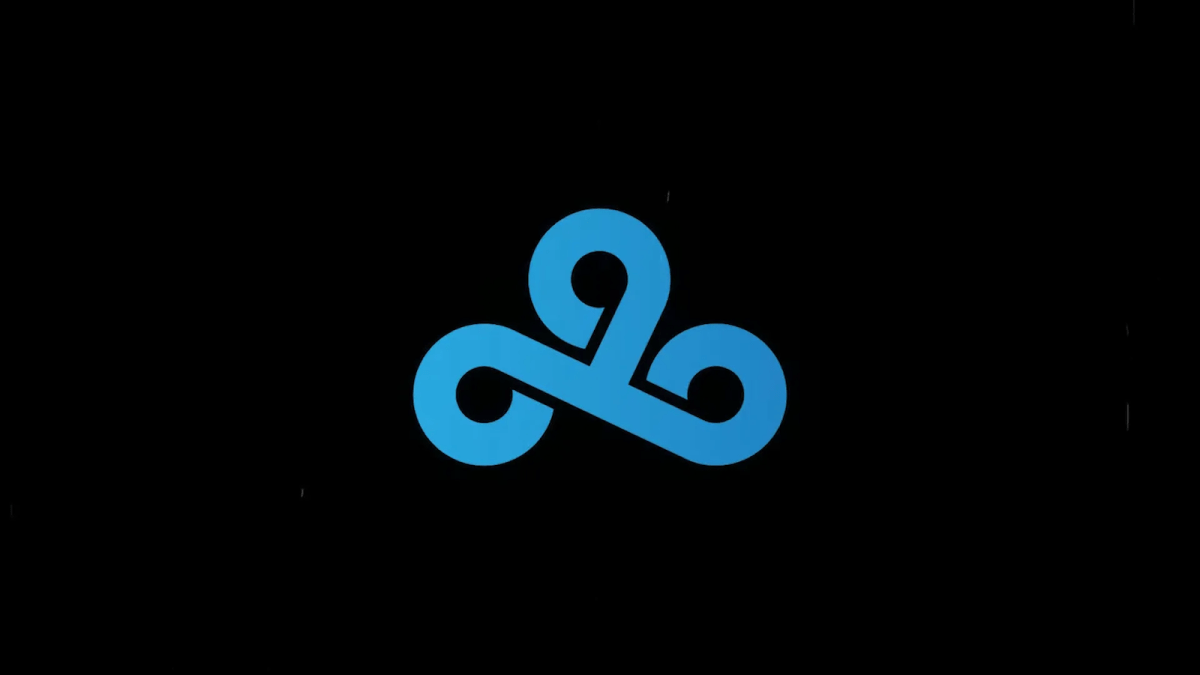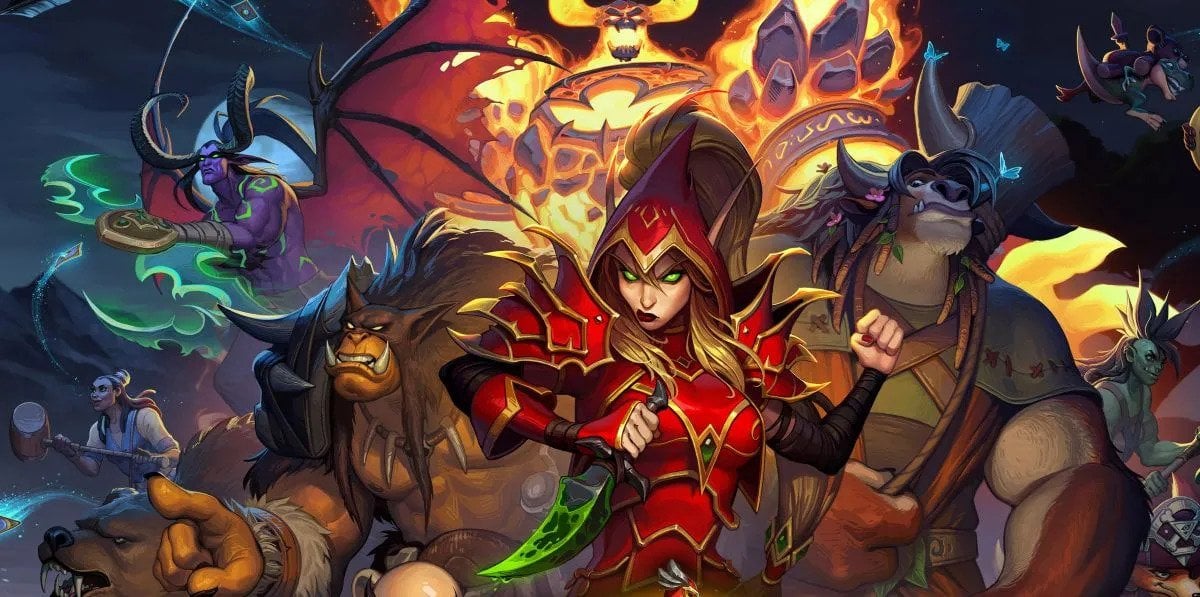With a new adventure on the way, articles about current decks lose a bit of relevance. Tech cards will change, the popular deck types will change, and players will be eager to try out the new cards. At times like these, it is more relevant to examine deckbuilding principles than decklists.
Mulldrifters and Baneslayers: The Core Concept
The deck building concept of “Mulldrifters and Baneslayers” was pioneered by Magic: the Gathering hall of famer Patrick “The Innovator” Chapin. Mulldrifter and Baneslayer Angel were two powerful and popular cards at the time.
The basic idea is that every minion in your deck should be either a Mulldrifter (a card that provides value whether it dies or not) or a Baneslayer (a card that provides no value if killed, but wins the game in short order if it is not). If all of your minions are Mulldrifters your opponent’s removal is poor because you still gained a benefit if your minions are removed. If all of your minions are Baneslayers, eventually your opponent’s removal will be exhausted and they’ll die to the last threat left standing. As the old adage goes, “there are no wrong threats, only wrong answers.”
So why limit yourself to only one category of minions? Why not run both Mulldrifters and Baneslayers?
Well, if half of your minions are Mulldrifters, they won’t threaten to kill the opponent, and they won’t be able to accumulate enough card advantage* to grind your opponent out of cards. The half of your minions that provide no value if killed don’t help run your opponent out of cards, and they provide a good target for your opponent’s removal that would be wasted on your smaller value minions. Running only one or the other makes your strategy harder to counter and your deck more consistent. This is why you should run Fel Reaver in an aggro deck and not Azure Drake; if the opponent has had to use their removal on earlier threats, the Fel Reaver will kill them very quickly. If you played an Azure Drake instead, its relatively unthreatening 4/4 body could give the opponent time to recover and reclaim the board before you finish them off.
*An aside on card advantage (if you are familiar with the concept already, feel free to skip this section): Card advantage is the concept that having more cards than your opponent translates into victory if you both have time to play all of your cards. An example of this would be when a Priest draws a ton of cards off of Northshire Cleric and then trades minions and removal spells until you have nothing left while they still have 5 cards in hand. Mulldrifter-type minions often draw cards, and often have a ‘virtual’ card advantage effect by making your opponent’s removal spells not worth a full card. Shield Slamming a Haunted Creeper isn’t a good use of a card.
To gain card advantage, you need to trade your cards for multiple of your opponent’s cards (Fiery War Axe killing two minion) or draw multiple cards with one card (Arcane Intellect). The common terminology is an “x-for-1” where x is the number of cards you handled with your one card. An Azure Drake that trades with a Lost Tallstrider after drawing a card was a 2-for-1, a Holy Nova that killed four opposing minions was a 4-for-1, etc. It’s not always easy to quantify where tokens and deathrattle minions are concerned, but it’s an easy baseline to understand and communicate.
Mulldrifters in Hearthstone
There are many cards in Hearthstone that you play without caring if they die or not; these are Mulldrifters. An excellent Hearthstone example of this concept is the card Azure Drake. You don’t include Azure Drake if your plan is to beat down quickly – you play it if your plan is to slowly exhaust your opponent’s options and kill them once they’re helpless. Some other great examples:
Mad Scientist – it feels bad to use a spell on this guy when you know your opponent is going to play a free secret from their deck.
Keeper of the Grove – once his battlecry has gone off (hopefully killing or crippling a minion), the 2/4 is just a nice after effect.
Ancient of Lore – the 5/5 body is nice, but you’re primarily playing this card for the card draw.
Webspinner – the card you draw is usually better than the Webspinner itself!
Sludge Belcher – his stats are mediocre, but the deathrattle that summons another minion makes removal feel really bad against him.
Sylvanas Windrunner – a 5/5 is moderately threatening, but the main reason you play her is to gain value against a clogged enemy board.
Additionally, due to the fact that minions can attack other minions in Hearthstone, taunts (or other high-health minions) can sometimes function as mulldrifters. If a minion has already killed something in combat and is damaged, it is a 2-for-1 in your favor if the opponent uses a removal spell on it. Minions that commonly get a 2-for-1 in this manner include Sludge Belcher, Twilight Drake, and Twilight Guardian.
Baneslayers in Hearthstone
Baneslayers don’t do much if your opponent removes them immediately, but if one survives you feel great. These are the minions you pump your fist for when they live until your next turn – they are often referred to as “soft taunts” because your opponent will go to great lengths to kill them. They often snowball the game out of control if played on curve and not answered. Emperor Thaurissan making your whole hand cost two less often lets you deploy cards faster than your opponent can answer them. Knife Juggler living on turn two frequently allows you to kill your opponent’s early minions without trading yours away and gives you a huge lead. Some other popular Baneslayers:
Fel Reaver – there is perhaps no other card as punishing of a lack of an answer. Fel Reaver punches way above his weight class and knocks the opponent out in two or three hits.
Ragnaros the Firelord – as we talked about with Fel Reaver, 8 damage a turn is A LOT of damage. Ragnaros one-ups the 5 drop by delivering his damage right away and ignoring taunts. A game where Ragnaros lives and you get to use your full mana to clear the way for him is generally going very well.
Archmage Antonidas – Antonidas may be the only card in Hearthstone more punishing then Fel Reaver. When Antonidas is allowed to live for a turn, he generally attacks for 5 and grants you two Fireballs (that’s 17 damage for those keeping track at home), while leaving two more Fireballs in your hand so that even if he is killed before your next turn, you can still deal 13 damage with the help of your hero power the next turn. 17 + 13 is 30. That’s game, folks, from one card plus one spell.
Minions That Provide Extreme Value
Some Hearthstone cards are threatening AND provide value whether they are killed or not. Most of them are very expensive (Ysera) or only moderately threatening (Rhonin). Some, however, don’t cost as much as they maybe should (and many cry for nerfs) or are a little TOO powerful. The poster boy for power + value is none other than Dr. Boom. The good doctor’s most common “counter” is Big Game Hunter, but the Boom Bots he comes with kill the BGH while throwing around another 2-8 damage and often killing 2 or 3 small minions.
Because of how good these minions are, it’s a good idea to include as many of them as you can in your deck, regardless of its strategy. Some of the best cards in Hearthstone are:
Savannah Highmane – the original “if this attacks you once you’re dead” minion. Savannah Highmane’s 6 attack is very frightening to face down in a class as aggressive as Hunter, and when he dies you get two 2/2’s to help clear up the board for your second Highmane (you can play TWO of these?!) or push for lethal. He killed Mufasa, and now he’s coming for you.
Murloc Knight – a 4 mana ¾ is nothing to write home about, but spitting out another 1-4 cost minion every turn makes it very difficult for your opponent to keep up on the board, and when they kill murloc knight you still have the murloc(s) left to wreak some havoc.
Mysterious Challenger – he really earns his “Dr. 6” moniker – drawing and playing up to FIVE CARDS, even if 2 or 3 of them are bad, is extreme value, and a 6/6 that grows ends the game in short order. It is very difficult to lose if you’re ahead on the board and drop a Mysterious Challenger.
Tirion Fordring – huh, this Paladin class has some pretty good cards. Tirion beseeches you to put your faith in the light, and if the light is a 6/6 divine shield taunt that gives you a weapon to kill up to 3 more minions or do 15 face damage your faith is well placed. It’s hard to imagine a situation where you aren’t hopelessly behind that Tirion won’t turn around or make difficult for the opponent.
Piloted Shredder – I believe that Piloted Shredder is the best minion in the game. He has the standard attack value for his mana cost, and if he dies you often are able to trade the minion that drops out for another card. Nearly-guaranteed 2-for-1’s should cost more than 4 mana.
So How Can I Apply This?
When you are deciding what minions to fit into your new deck, you should try to stick to the principle of “all Mulldrifters” or “all Baneslayers” to make your deck more consistently execute its plan. When your aggro deck needs a 5-drop to top off the curve of Leper Gnomes and Knife Jugglers, pick Fel Reaver instead of Azure Drake. When you need a finisher in your control deck that is currently running Dr. Boom, Ragnaros, Grommash Hellscream, and Alexstrasza, pick Baron Geddon instead of Nefarian.
A Place where players commonly go awry is Control Warrior. The legendary suite that you use to end the game is very customizable depending on the metagame and your personal collection. You can go aggressive with it and seek to end the game with an Alexstrasza into Grommash combo or go defensive and try to outlast the opponent into fatigue, but you shouldn’t mix the two packages. Emperor Thaurissan does not belong in a deck with Justicar Trueheart, Ysera, Nefarion, and Sylvanas; but he is great if you are trying to push the late-game tempo by dropping huge threats like Ragnaros and Alexstrasza. Some cards fit into both plans, of course: Dr. Boom and Baron Geddon are both value and threats on most board states.
And in the end, you can’t go wrong by putting Piloted Shredder and Dr. Boom in every deck.
Conclusion
When you are putting together your minion curve, especially in the 5+ cost range, try to align all of your minions on the same axis: game-ending threats or card advantage-gaining value. Stretching your opponent thin on one of those avenues of interaction will lead to far more wins than going halfway down each path.
Please don’t hesitate to ask any questions in the comments, and all comments are appreciated. Thanks for reading!
Until next time,
LightsOutAce





Published: Nov 11, 2015 10:17 am